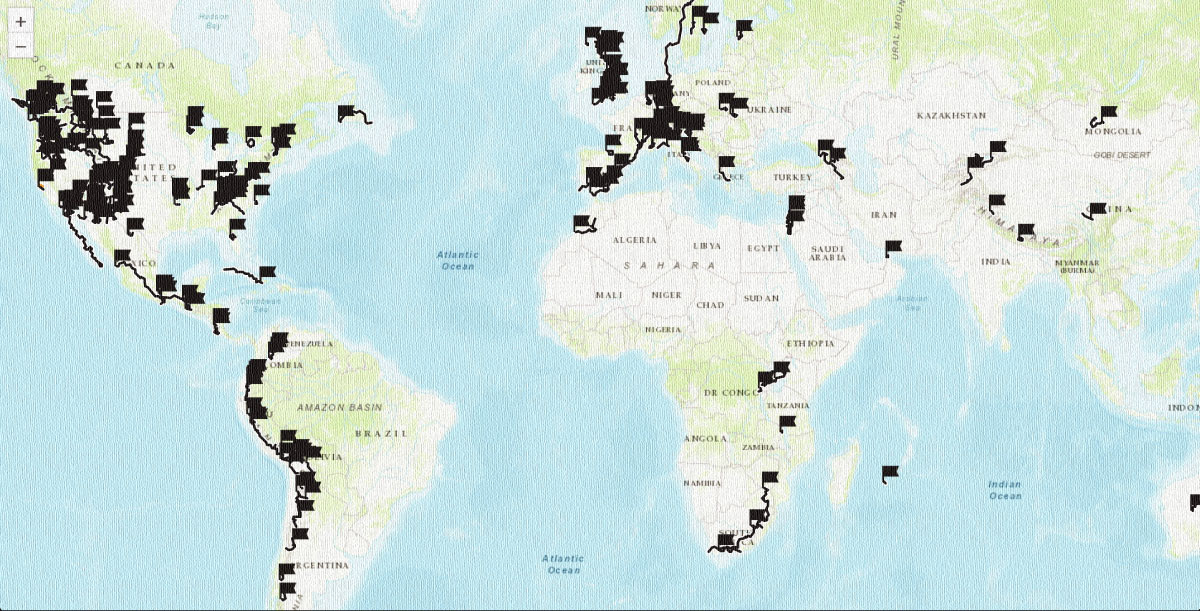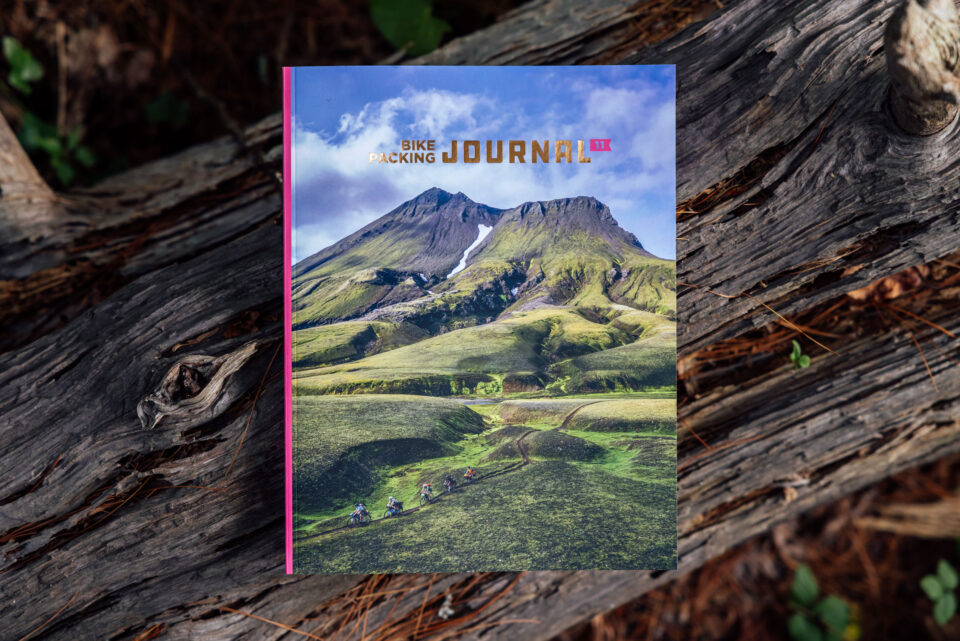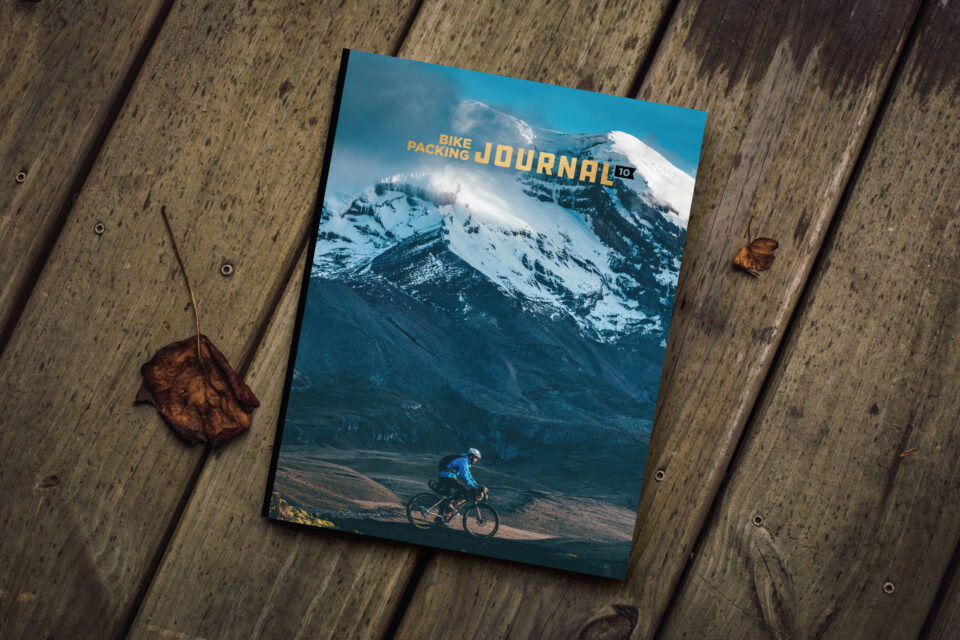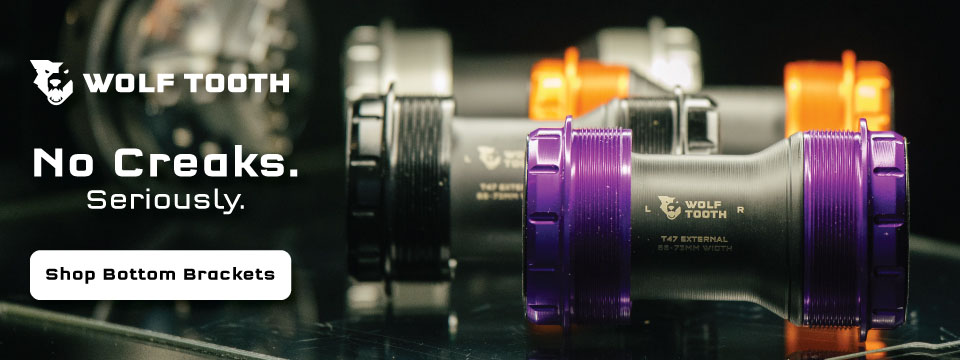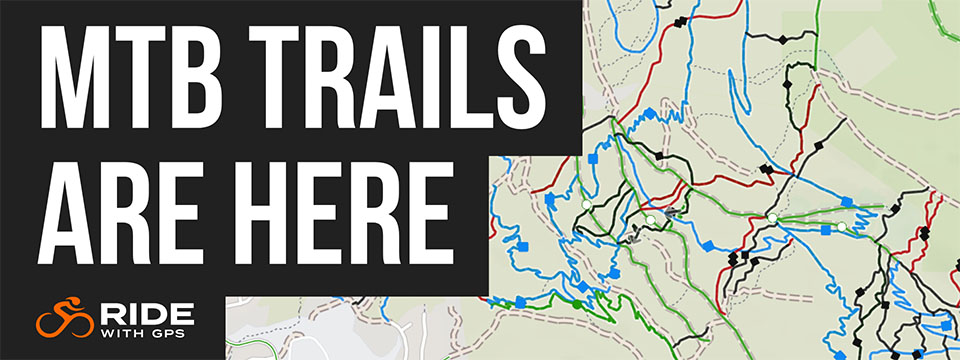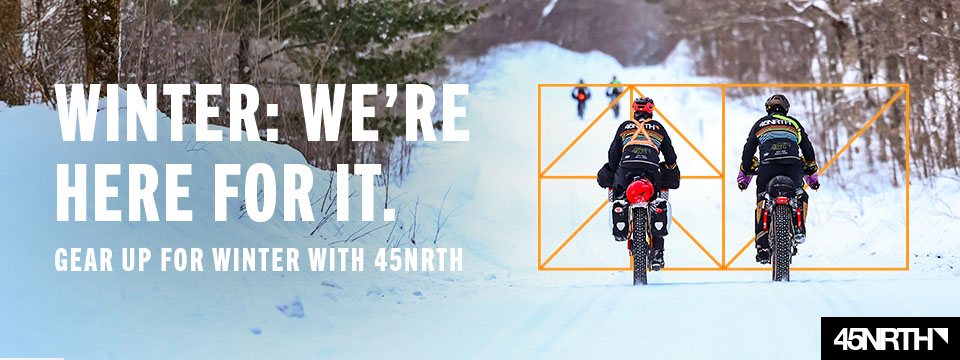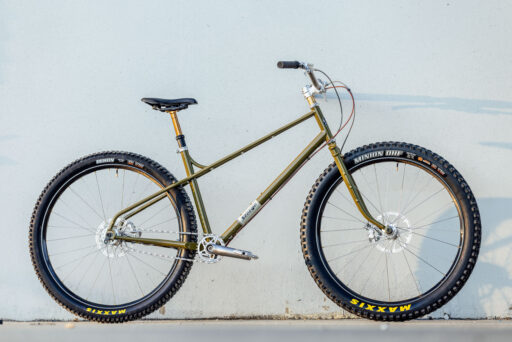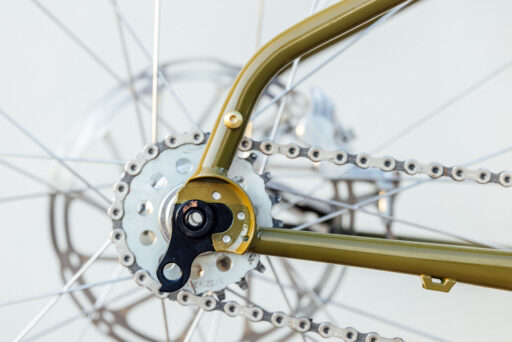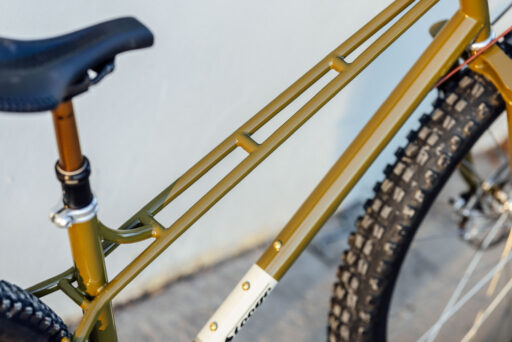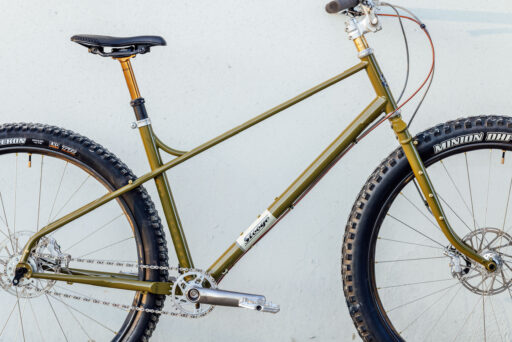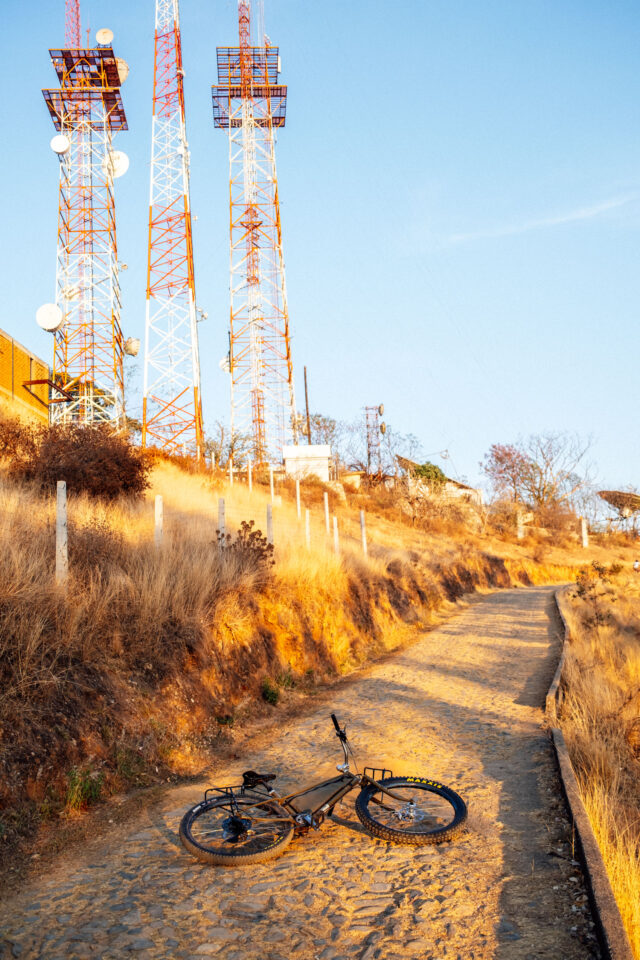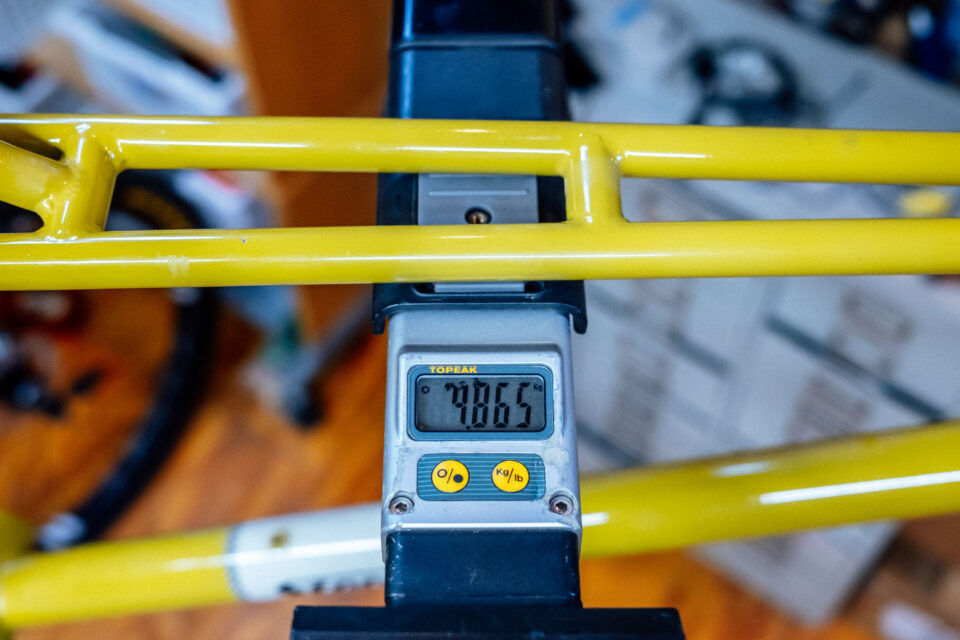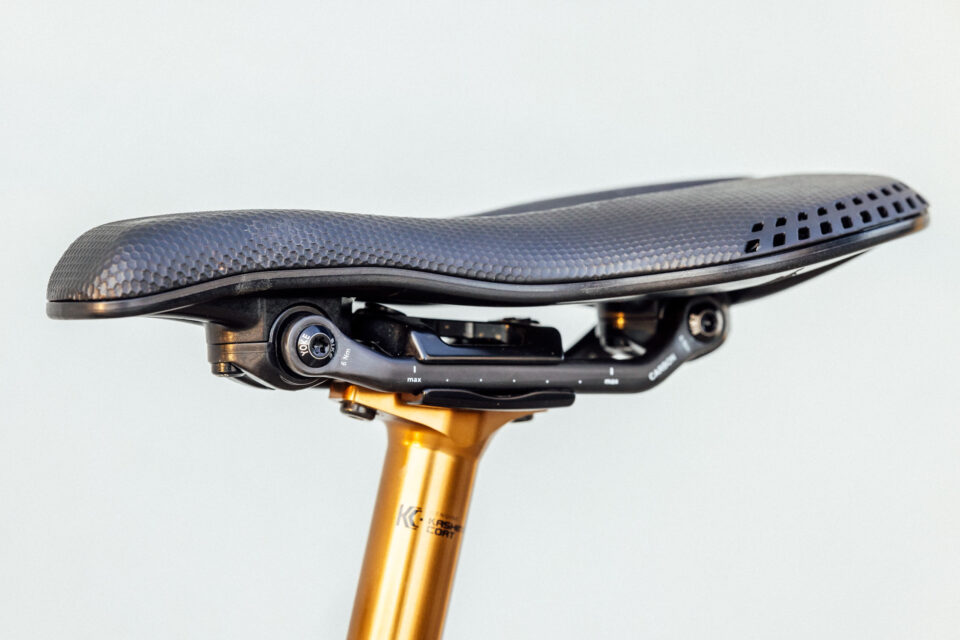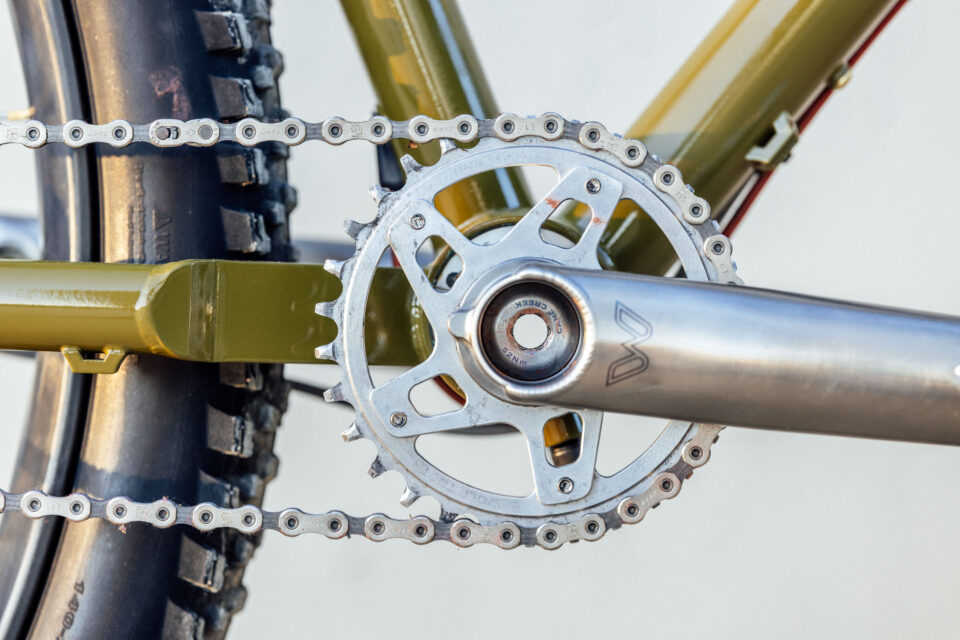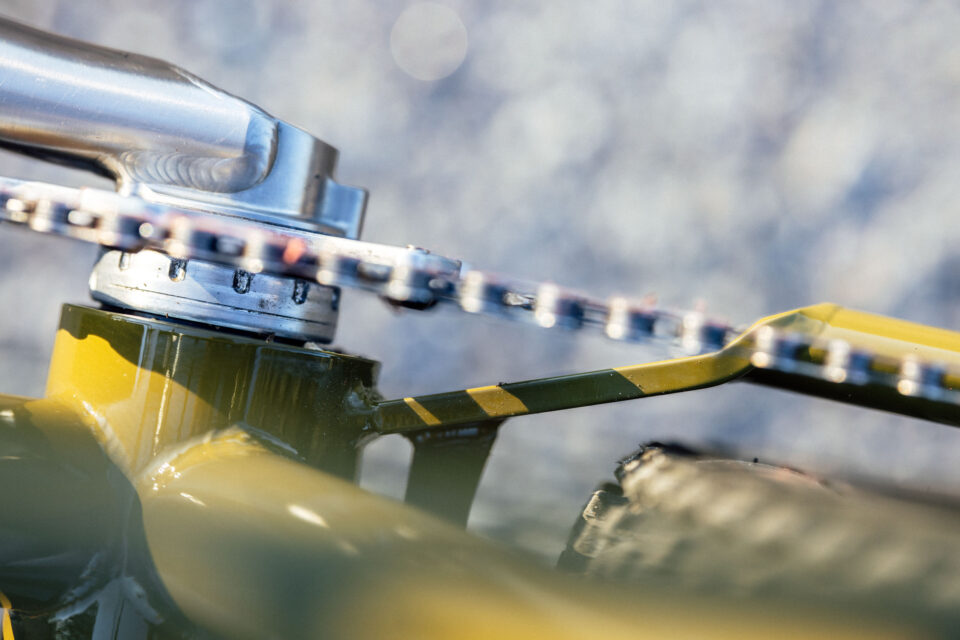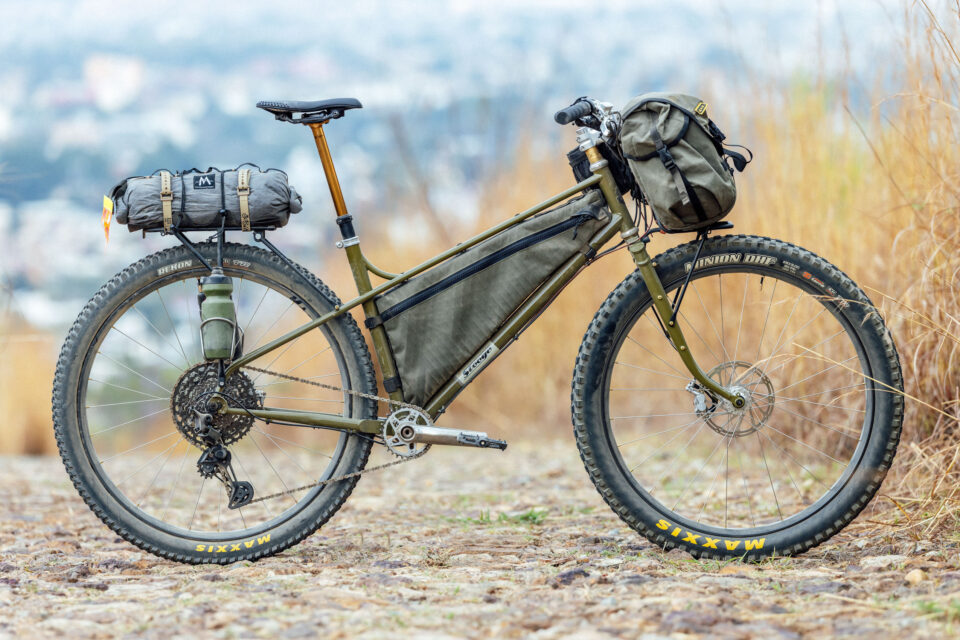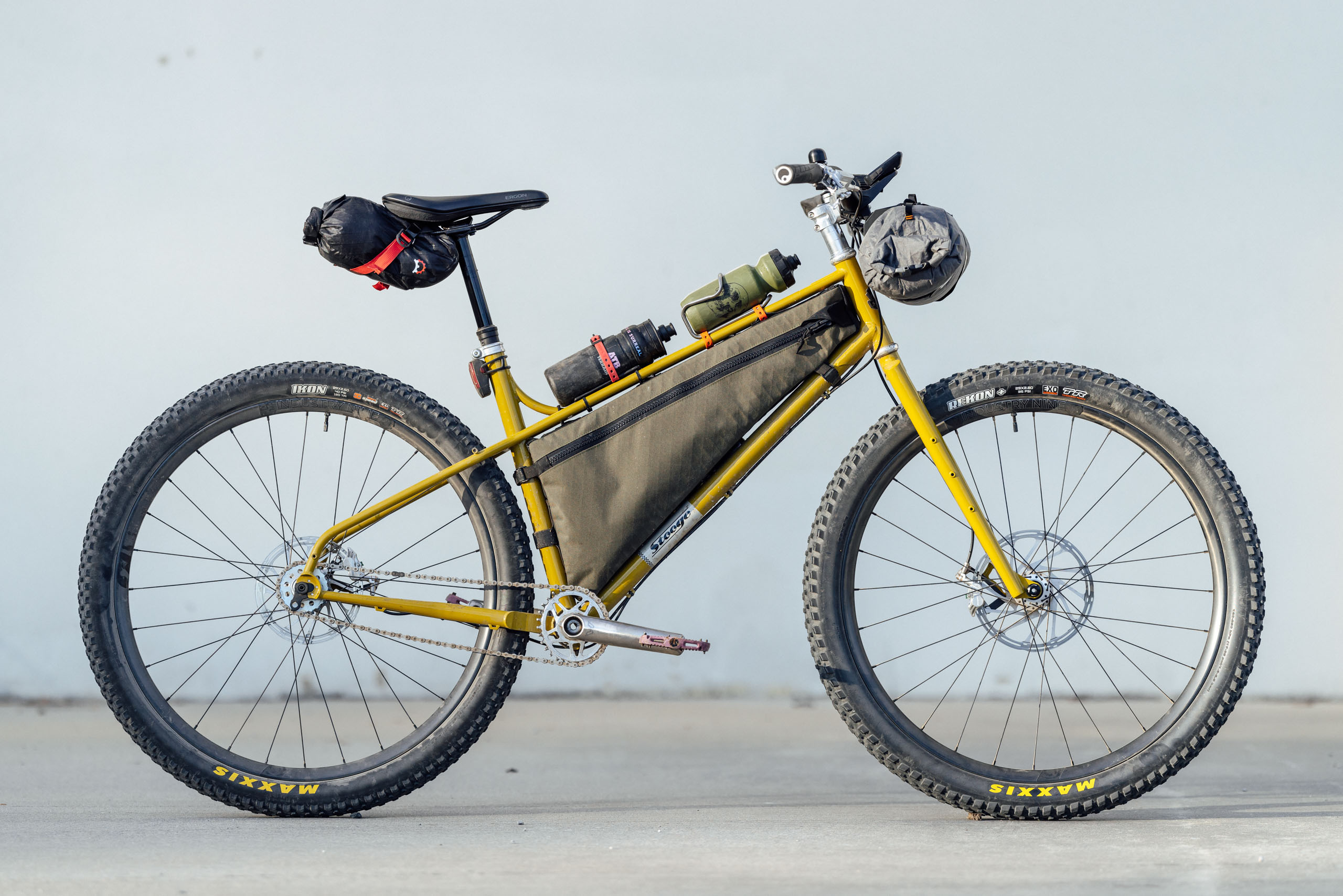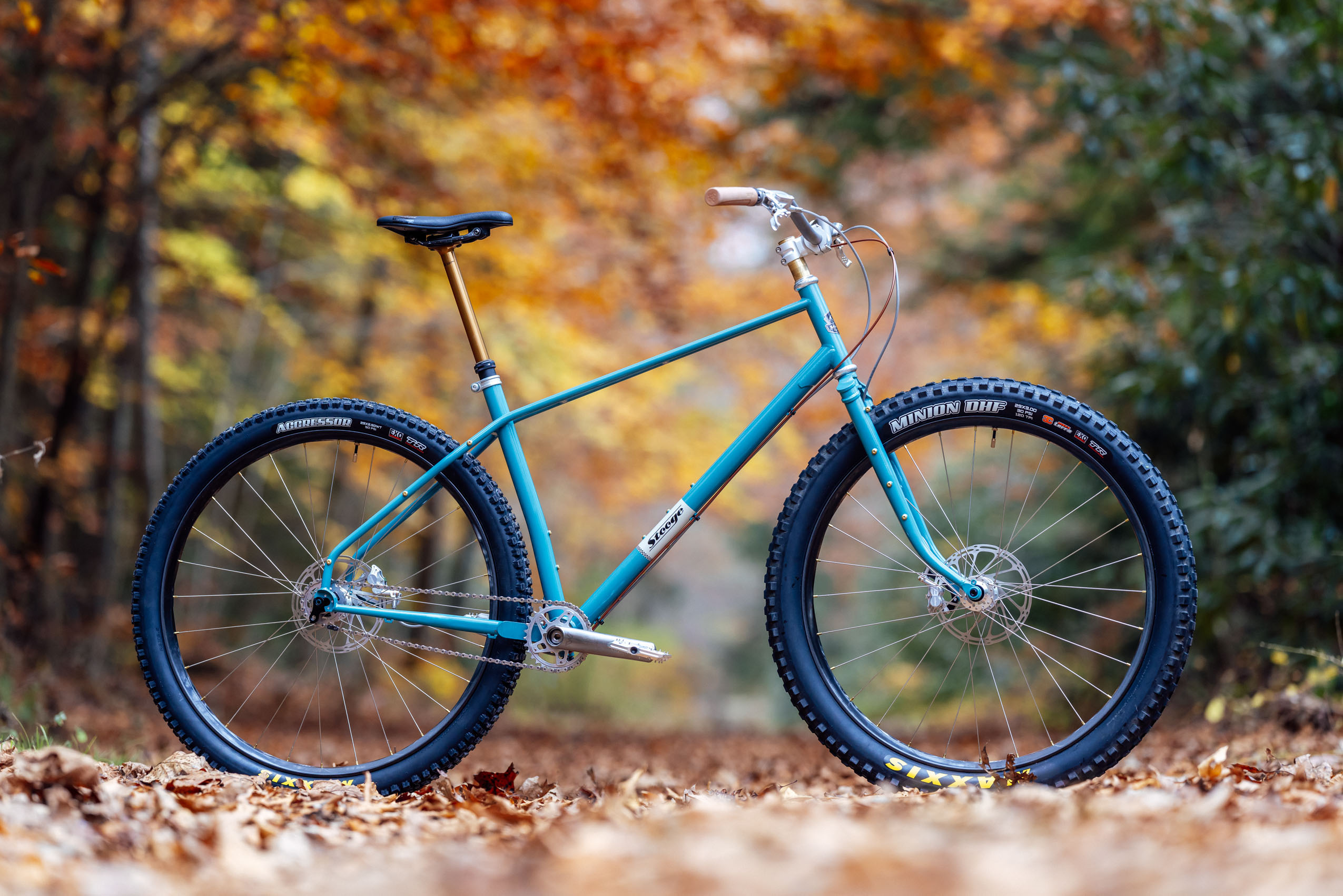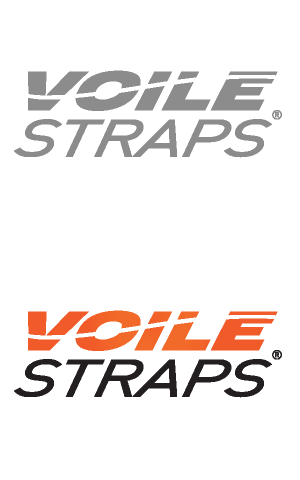Stooge MK7 Review: Familiar Fairy Dust
The Stooge MK7 isn’t a radical departure from the MK6, but a thoughtful evolution—made taller-rider-friendly, more bikepacking-capable, and still every bit as fun and playful as its predecessor. With (slightly) updated geometry, expanded sizing, and a new fork that adds capability and character, it’s the most complete Stooge yet. Find Logan’s thoughts on the latest in the Stooge lineage that’s nostalgic and modern all at once…
PUBLISHED Jul 29, 2025
Like most people, the older I get, the more I find myself falling into repetitive patterns—or, as they say, getting stuck in my ways. But c’mon, you have to admit that there’s something about sticking with what you know that just feels right. There is real psychology behind this, and a reason we grow attached to things. To paraphrase what I’ve read, familiarity breeds comfort. We tend to trust what we’ve used before because it’s predictable, and it provides a sense of control in an increasingly unpredictable world. We’re wired for it, and over time, these preferences become part of the identity we build around ourselves. That’s partly why people develop strong brand loyalties and often hesitate to try something new, even when other options exist. For me, that comfort shows up in the living room armchair I always gravitate toward, the coffee mug I know exactly how long it takes to go cold, the fact that I now own five pairs of identical flat-pedal mountain bike shoes—and apparently, in my affection for Stooges.
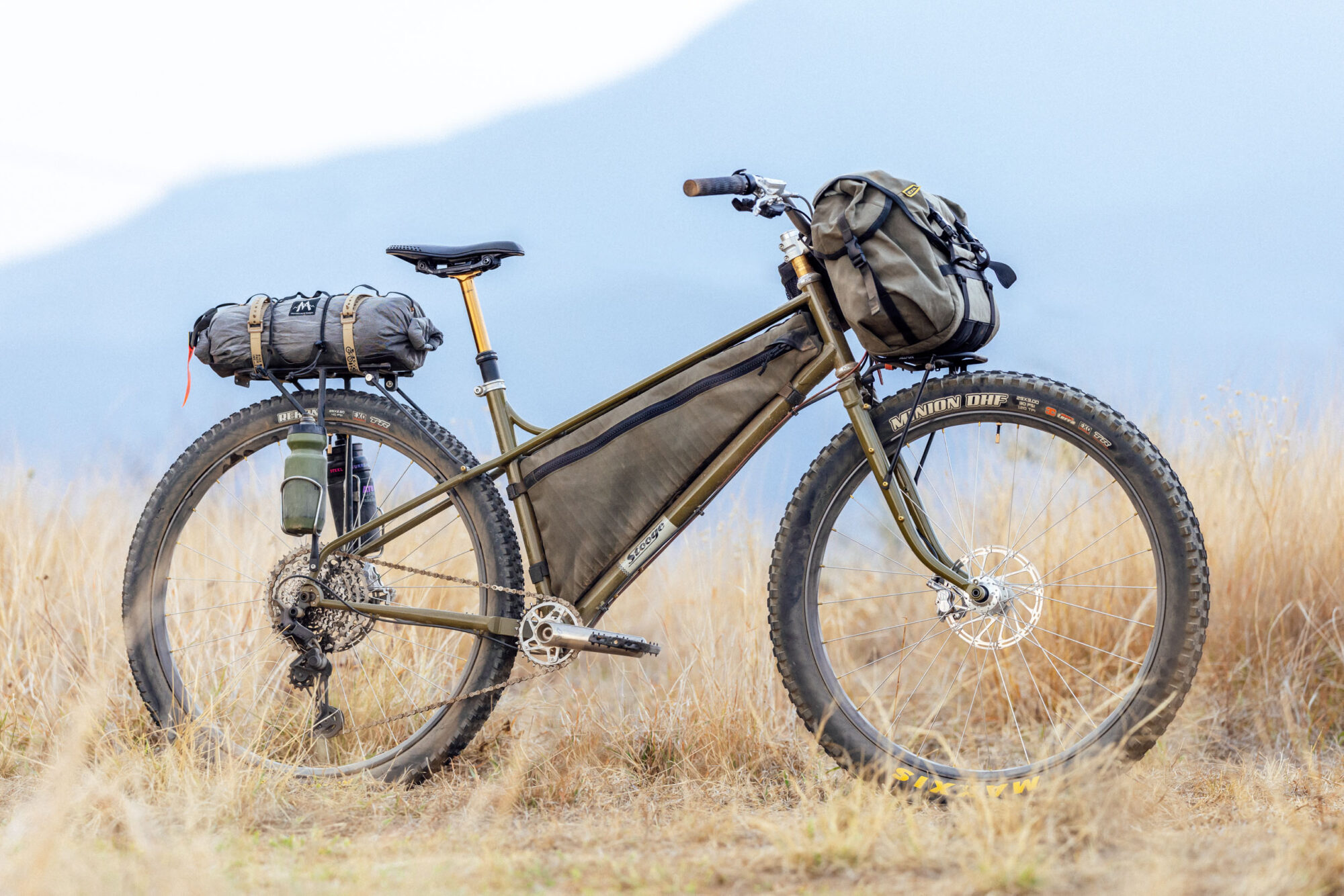
I’ve reviewed a lot of bikes over the years, and I prioritize ensuring there’s always a solid mix. However, Stooge is one of the few brands that consistently pulls me back in. The MK7 marks the fourth Stooge I’ve tested in just two years, and while some of that is about curiosity and figuring out the subtle variations between models, it’s also because these bikes unwaveringly strike a chord. They feel fun and unique enough to keep things interesting, but they also have a strangely transcendent familiarity. Every time I jump on a Stooge, there’s a reanimation of some lost childhood state of being, like I’m going somewhere to do something slightly mischievous, without any worries. Most bikes do that to some degree, but Stooges seem to be infused with a little more fairy dust.
Either way, when I considered writing something about the MK7, I had to ask myself whether the seventh iteration of this bike actually pushes the Stooge platform forward enough to justify yet another Stooge review. I think so, but I concluded that this isn’t going to technically be a full-blown review, either. I’ve ridden the shit out of this bike since last fall and have put it through all forms of trials and tribulations. However, I’ve kind of already reviewed it. So, if you haven’t read my detailed thesis on the Stooge MK6, open it in another tab, give it a read, and consider this an intermission. Everything I said about the MK6 can be applied to the MK7—well, almost everything.

What Changed
The Stooge MK7 is almost the same bike as the MK6, with a few improvements that I’ll touch on during this extended and glorified bike check. One of the key differences is that there’s a new size, and the sizing definitions are a little different. In the past, Andy Stevenson, Stooge’s founder and designer, has largely made the flagship Stooge based on his own personal measurements, only offering a size that’s reminiscent of a large with a smaller option that measures up to a medium. This is the first time he’s made an effort to cater to taller riders and released the Stooge MK7 in three sizes. Alongside the 16″ and 18″ frames is a new XL 20″ frame with a longer effective top tube and reach, making it ideal for riders 6’2″ and taller. I was very tempted to try the 20” model, but I opted to stick with the size that fit me, since the angles and measurements of the 18” are largely the same as the 19” MK6 I reviewed.
For the record, I’m 6 feet tall (1.83 meters), and have a 75” wingspan (1.91 meters), or +3” ape index, and a 34.5” Inseam (0.88 meters). If I had it my way, I’d love to see the top tube lifted about two centimeters in the front (with an even longer head tube providing more stack) and the seat tube/seat stay junction moved up about three or four centimeters—but that’s based on my fit, and is really more in the Stooge Scrambler’s wheelhouse.
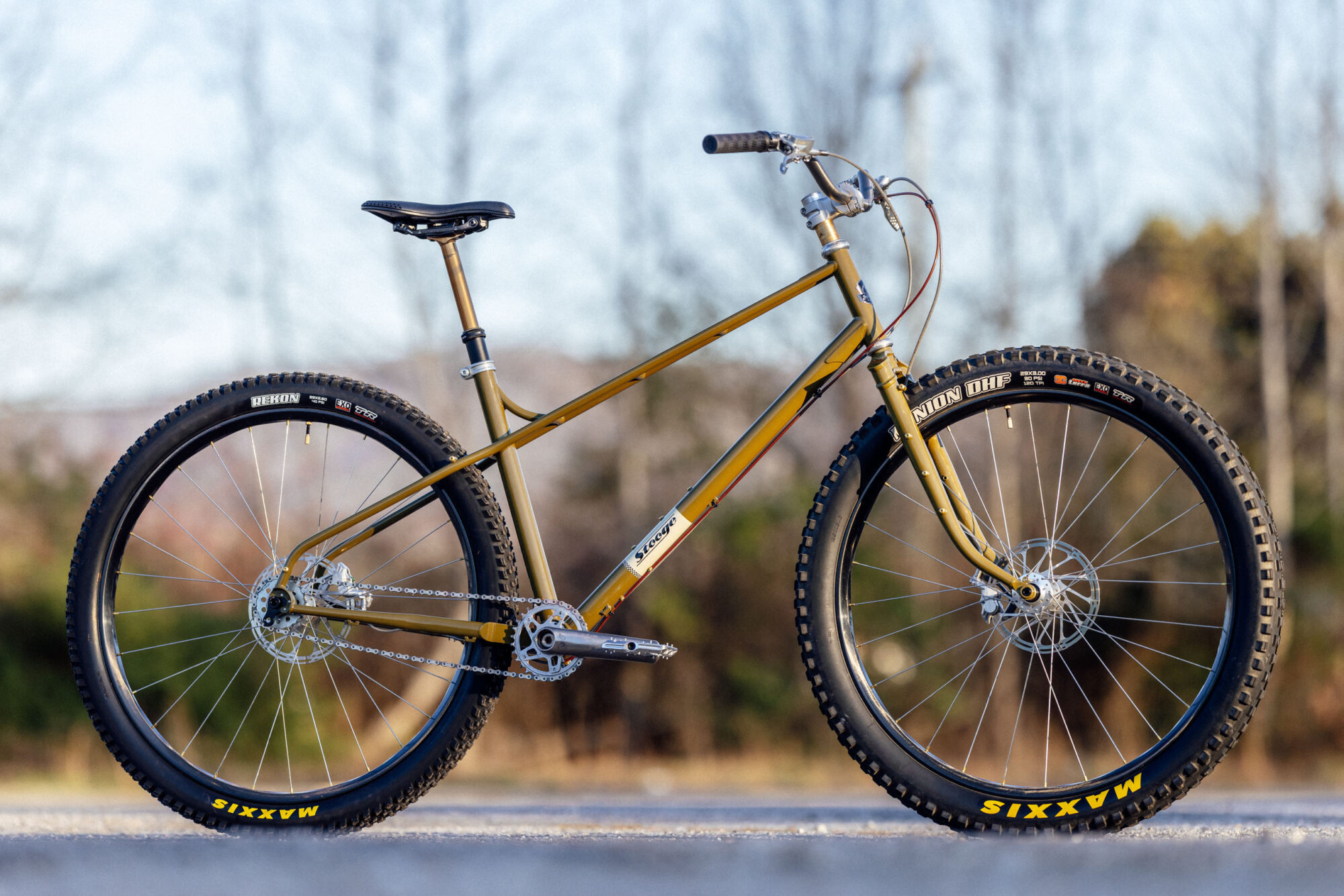
The geometries of the 18” MK7 and 19” MK6 are almost identical, save the MK7’s longer fork offset and a slightly shorter seat tube, hence the 18” designation. One of the cons I noted in the MK6 review was that the “top tube/seat tube junction could be a centimeter or two higher.” Instead, there was about an inch of tubing that was basically hacked off above the bridge at the junction—my con wasn’t addressed with this change; the top tube and standover aren’t lower. However, in hindsight, I think this was the right move, and I consider this a significant improvement. Looking at my MK6 build, I barely had enough room to squeeze a 210mm post. Generally, 210mm is plenty, but I have very long legs, plus I’ve come to really enjoy the longer 240/242mm posts from OneUp and Wolf Tooth, respectively. I’m happy that I could easily fit one of them on the MK7, despite having built it with a 210mm Fox Transfer I had at the ready. Note that the lack of bottle mounts on the seat tube—and the fact that it’s perfectly straight—enables the use of long-travel droppers on this bike, which many folks will appreciate. Plus, normies with legs of a reasonable length will have the option for more dropper travel.
| Size | 16″ | 18″ | 20″ |
|---|---|---|---|
| Effective top tube | 610 | 625 | 645 |
| Seat Tube Length | 406 | 457 | 508 |
| Head Tube Length | 150 | 157 | 165 |
| Chainstay Length | 445 | 445 | 445 |
| BB drop (+/-7mm) | 60 | 60 | 60 |
| Fork A/C | 455 | 455 | 455 |
| Fork Offset | 65 | 65 | 65 |
| Head Angle | 66° | 66° | 66° |
| Seat Angle | 74° | 74° | 74° |
| Reach | 439.5 | 452.6 | 470.6 |
| Stack | 594.5 | 601.3 | 608.2 |
Of course, the most visible change is the new fork. It’s actually not a new fork; it’s the same one that’s specced on the Dirt Tracker, featuring a longer 65mm offset (57mm on the MK6) and the bi-plane, raked-out design. The move to this fork also lengthens the wheelbase by nearly a centimeter.
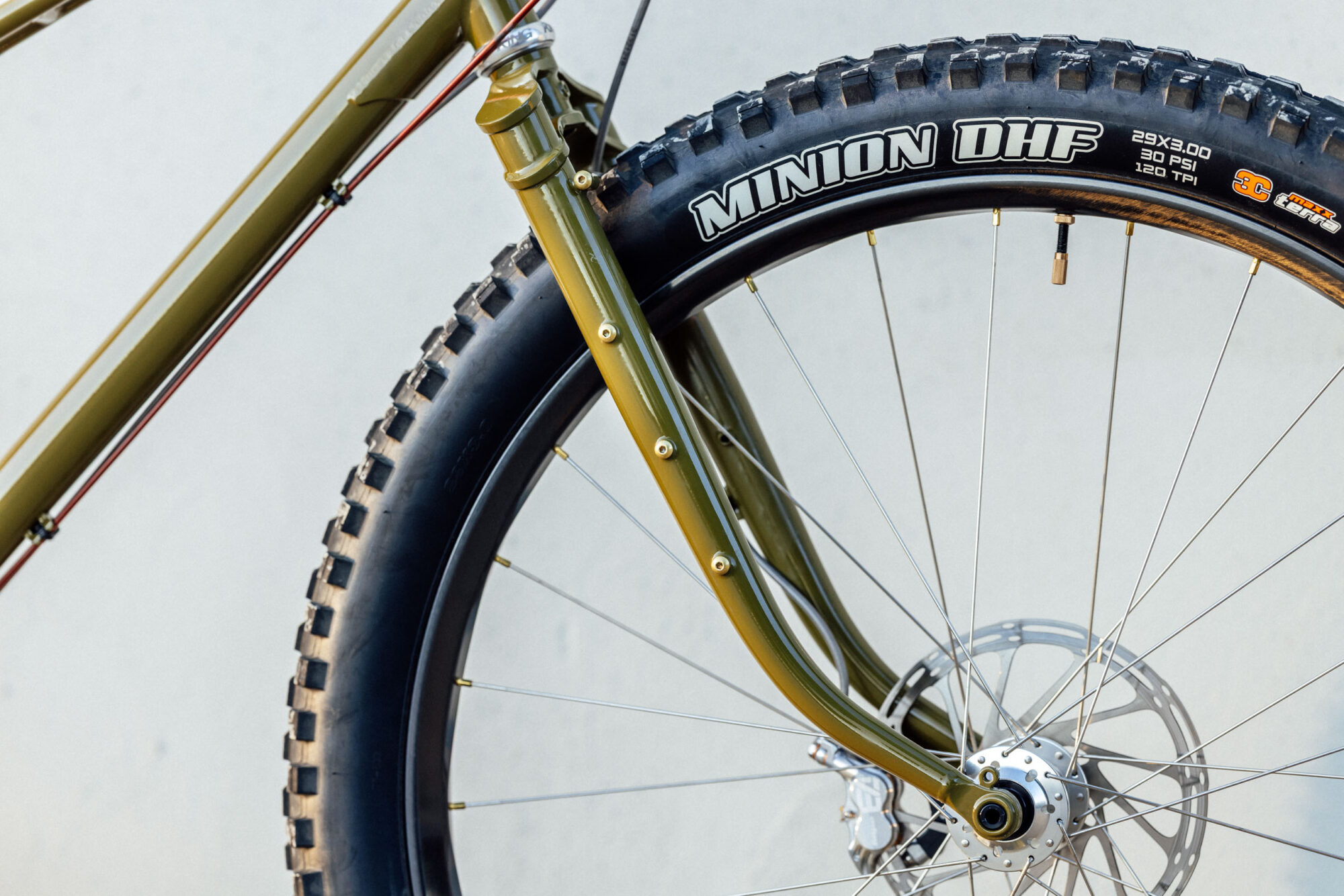
As I mentioned in my review of the MK6, with each iteration of the original Stooge, Andy makes a few subtle refinements that “move it toward his mission to craft the ultimate rigid mountain bike.” As he summed it up, “I always think of the MK as my rigid trail bike, and the 7 was an exercise in moving towards what I feel is the perfect version of this.” It seems like the MK7 geometry is the final destination for the MK frames. He told me that after he rode the Dirt Tracker with the 65mm offset fork, he was so blown away by how the steering on that bike felt that he had to use it on the MK7. Perhaps Andy is getting stuck in his ways, too, and after two or three more generations of these bikes, they’re all going to be exactly the same—perfection!
For a lot of riders, the difference might be so marginal that they don’t initially notice, but I found that the little added wheelbase and offset provide more confidence at speed and a notable quickness in the steering—two things I love about the Dirt Tracker. It allows you to juke and jive with rocks and obstacles while the long and stable platform keeps you planted. It’s a unique balance and a fun ride quality that’s decidedly Stooge. Plus, it looks really cool, and that kicked out front wheel makes you want to go a little bit faster on the descents.
That brings to mind the only significant con I had with the MK7, which was particularly noticeable when in singlespeed mode—the frameset is over a pound (475 grams) heavier than the MK6. And all of the additional weight is in the front, in the fork, as the frame remains largely unchanged from the MK6. When I asked Andy about it, he admitted that the new fork turned out heavier than expected, primarily due to a beefed-up upper section designed for maximum durability. Being steel, the weight adds up quickly. Initially, this raised some concerns, but as Andy summed it up, “I was a little worried about it at first, until I started riding, and now I kinda relish the lack of brake flex and the knowledge that I can really thrash it.” I would agree that the increased stiffness and lack of brake flex are a welcome tradeoff, and I think the fork still rides and feels a little more compliant than the segmented version on the MK6. That said, Andy mentioned that work is already underway on a new set of custom fork tubes—lighter than this latest version but stronger than the original—with hopes of finally striking the perfect balance for future Stooges.
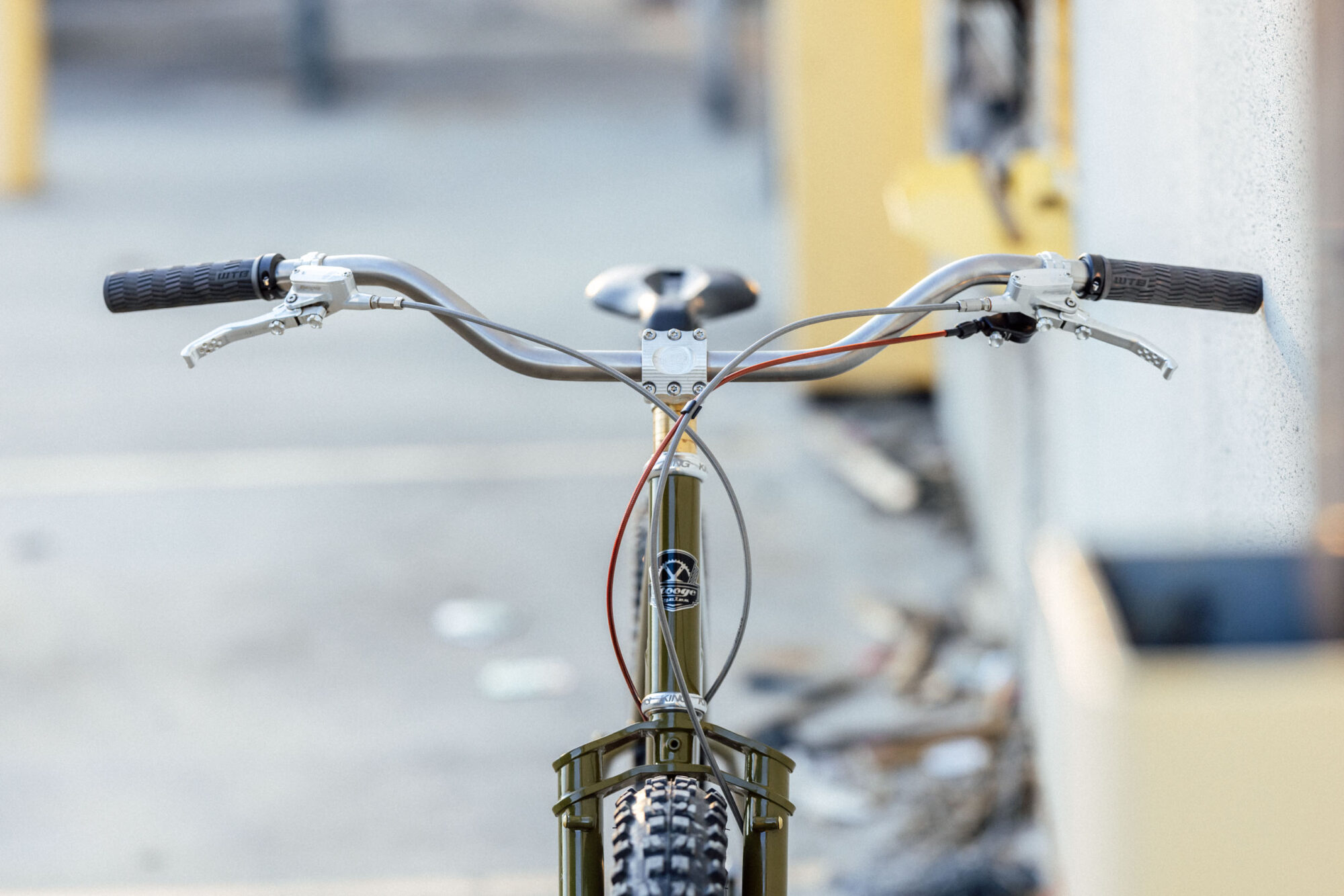
Build Kit
I built the Stooge MK7 with nearly the exact parts list—complete with silver and gold trim—that I had on the Scrambler I reviewed. I love this theme: bronze bolts, spoke nipples, valve stem caps, and headset spacers paired with a Kashima-coated dropper bring warm copper tones into the mix alongside a set of silver components, giving the MK7 a proper classic vibe, even though it’s built with thoroughly modern, high-performance parts. It’s a nod to bygone days, not a rejection of current standards or an attempt to shake a stick at new tech. This bike is built to be ridden hard, not to suffer from ill-suited, outdated component standards.
- Frame/fork Stooge MK7, Swamp, 18″
- Front Hub Project 321 Gen 3
- Rear Hub Project 321 Gen 3
- RimsWe Are One Fuse, 33mm IW, 28-spoke
- Spokes Double-butted Sapim Race, Simworks Raw Brass Nipples
- Front Tire Maxxis Minion DHF 29 x 3.0″
- Rear Tire Maxxis Rekon 29 x 2.6″
- Crankset Cane Creek eeWings, 170mm
- Derailleur Shimano Deore XT LinkGlide, 11-spd, M8130
- Shifter Shimano Deore XT 11-speed
- Cassette Shimano Deore XT Linkglide 11-50
- Bottom Bracket Shimano Deore
- Handlebar Stooge Tracker 85, 820mm
- Stem PAUL Boxcar, 50mm
- Grips WTB
- Headset Chris King
- Brakes Hope Tech4 E4
- Saddle BikeYoke Sagma 3d
- Seatpost Fox Transfer, 200mm
- Seatpost Clamp Hope
You’ll notice two completely different drivetrains shown in these photos. I first built it up as a singlespeed and rode it quite a bit in that format. Then I installed a Shimano Linkglide 1×11 drivetrain and turned it into a bulletproof ATB tourer for use on an extended trip in Mexico.
Other highlights include the new titanium Tracker 85 bar, a titanium version of the steel version I have on my Dirt Tracker. I love this thing. It has a notably more forgiving feel on the hands, more strength, according to Andy, and a whole lot less weight. It also comes stock with the perfect 820mm width, an 85mm rise, and a generous 23-degree backsweep. Chef’s kiss!
I specced it with one of my favorite tire combos, a 2.6” Maxxis Rekon in the back and the venerable (and invincible) 3.0” Minion DHF up front. While I might prefer a 2.8” Rekon in the rear—and Stooge states it can fit 2.8s—there wouldn’t be a ton of clearance, as you can see in these photos. That said, I like the fact that the trimmed-down 2.6” tire feels a little faster.
Bikepacking Vibes
There were a few updates made to the Stooge this round that make it significantly more bikepacking-ready than the MK6. One is the simple addition of three-pack mounts on the downtube, which the MK6 lacked. The other is the inclusion of the Dirt Tracker fork, which brings several additional mounting options compared to the segmented version found on the MK6. These include upper and lower rack mounts, plus fully threaded mid-blade eyelets that can also be used to bolt on uprights from the inside, allowing you to run a smaller front rack while still retaining use of the three-pack eyelets on the fork blades.

Keen eyes may notice I reused the exact same frame bag that I had custom-made for the MK6, and it fits like a glove. Despite its long, lean silhouette, the MK7 frame triangle can hold more than you might expect, thanks in part to its tall head tube and rigid-specific geometry.

While it’s first and foremost a fun, rigid trail bike, I’m especially excited about running the MK7 as my dedicated geared ATB and bikepacking rig. Like the MK6, it offers a nice upright posture and pedals efficiently. It has that rare demeanor that invites you to keep pedaling and still enjoy the ride along the way. It also ticks all the boxes for carrying gear, and it’s comfortable whether lightly packed or loaded to the gills with panniers and plenty of glam-packing accoutrements.
- Model/Size Tested: Stooge MK7, Swamp, 18″
- Actual Weight (frameset): 5.34 kg
- Place of Manufacture: Taiwan
- Price: £820
- Manufacturer’s Details: Stooge Cycles*
*The MK7 framesets are long gone, but they’re already taking orders for MK8
Pros
- All of the pros I listed for the MK6—eight total
- Love the additional offset at 65mm and the raked-out bi-plane aesthetic
- Added XL size!
- Additional under-down tube mounts
- Same frame space but less seat tube provides room for a longer dropper
Cons
- Fork is heavy
- Still not quite enough rear tire clearance to comfortably run 2.8” rubber
- I’d still like to see the top tube lifted about 2cm in the front (with an even longer head tube) and 3cm in the back—but that’s based on my fit
Wrap Up
All told, the Stooge MK7 doesn’t attempt to redesign the wheel, and that’s kind of the point. Like the rest of the MK series, it delivers a refined, joy-forward riding experience that doesn’t rely on a fully reconnoitered platform or complicated nuance to make its debut. Instead, it leans into well-considered, generational geometry, nicely specced tubing, and a dialed fork to bring something to the table that’s increasingly rare: a rigid trail bike that’s fun and versatile, offering an almost intangible spark that makes you want to keep coming back to it.
The updates on the MK7 might seem small on paper, but they make a meaningful difference, particularly for taller riders and folks looking for a more capable, bikepacking-ready platform. Between the subtle geometry tweaks, expanded sizing, new fork, and added mounts, this one feels like the most complete Stooge yet. If you’re already a fan of the Stooge ethos, the MK7 won’t disappoint. And if you’re new to the cult, this might be the best entry point yet—familiar, comfortable, and just mischievous enough to feel like something special.
Further Reading
Make sure to dig into these related articles for more info...
Please keep the conversation civil, constructive, and inclusive, or your comment will be removed.


